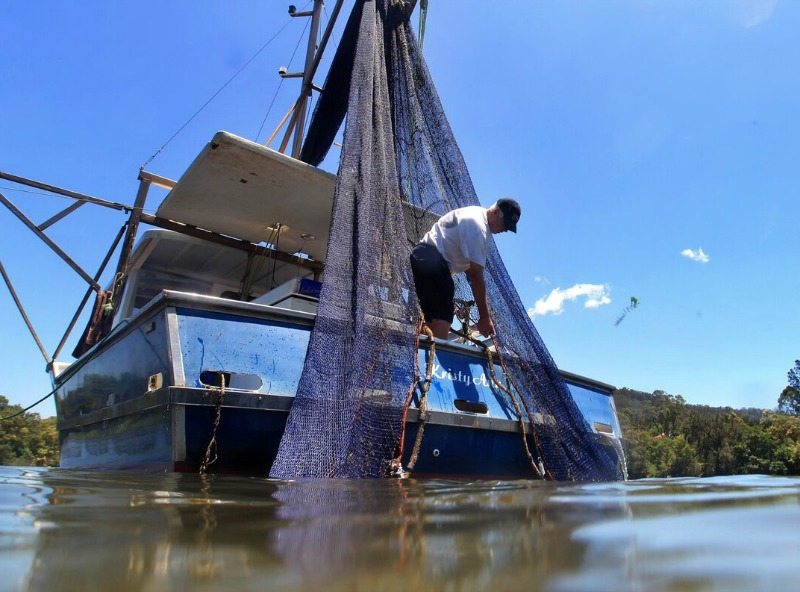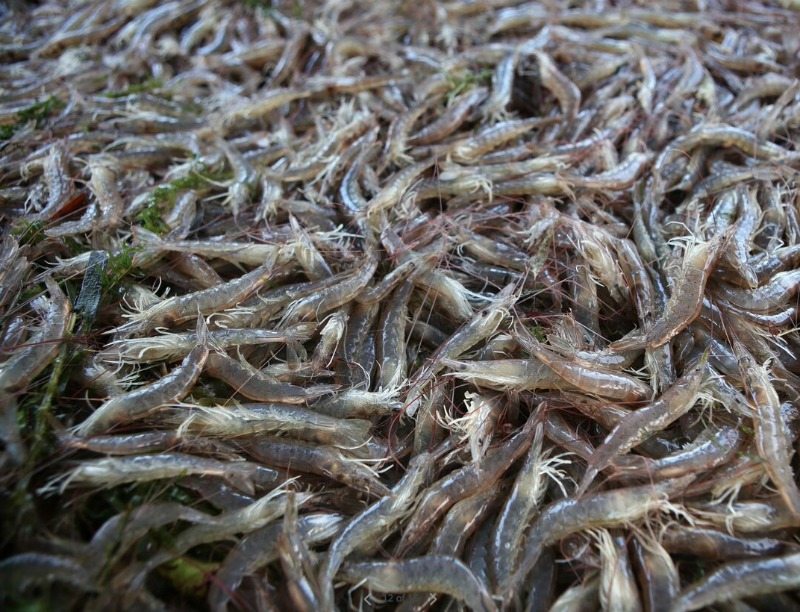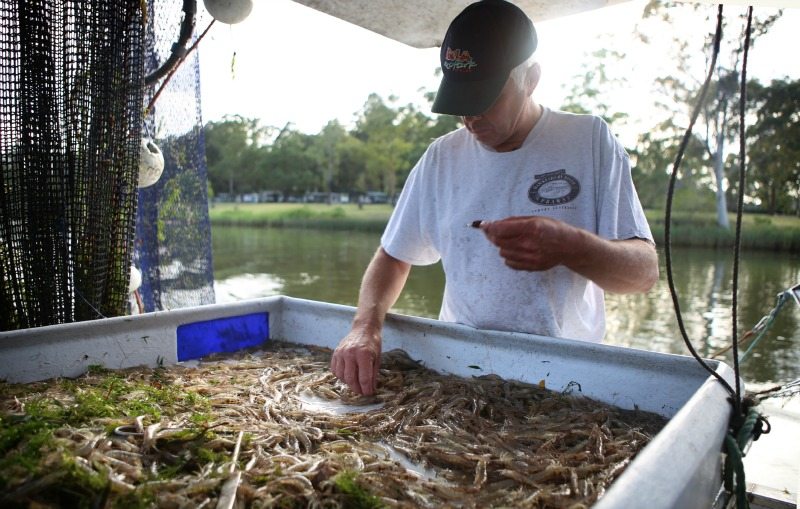It’s 4:45am and we have arrived on the Hawkesbury River. It’s a breath of fresh air to get out of the city and Gary Howard is waiting patiently for us at his gate. His house is located on a beautiful farm, about 20 steps from the Hawkesbury River-bank.
It’s 4:45am and we have arrived on the Hawkesbury River. It’s a breath of fresh air to get out of the city and Gary Howard is waiting patiently for us at his gate. His house is located on a beautiful farm, about 20 steps from the Hawkesbury River-bank. There is an abundance of plum trees to the right, and behind the house cattle are sleeping in the dark. With no time to waste, we make our way down to the river and take to the boat.
The boat is a medium sized one, and the nets hang from either side of the rafters. Six of us pile in easily and take a seat. Gary starts the motor and off we go to join in the queue – first in line for the morning trawl. This morning, Gary’s is the first boat on the river but he explains that this is not always the case. It makes all the difference getting in line early because the first trawl can often be the best one. But this of course all depends on the weather, the tide and the moon. The windless weather, high tide and small moon.
Today is a good day. The tide is high and the water is murky. The best time to fish for prawns.
I sat and listened as Gary explained to us the art of fishing on the Hawkesbury River. Number one. It is in his best interest to keep the river healthy and full of fish. Without a healthy river, there are no healthy prawns and without healthy prawns, Gary can’t run his family business.
The nets are fit for purpose – the holes are the perfect size to catch adult school prawns and leave the young ones to mature. This is the breed we are after. School prawns, I learnt, are deliciously tasty for human consumption and can keep fresh for up to six days if they aren’t frozen.
Unfortunately, much of the catch is used as bait by recreational fishers as consumers increasingly go for cheaper, bigger imported prawns.
The question that ran through my head that day was how can one person catch so many prawns and have this be a sustainable practice? So I asked. As usual, I asked all the questions.
How long does it take for a prawn to reproduce? How many eggs do they lay at once? Does the trawling damage the bottom of the river? Is there bycatch? And I received answers. Gary was very knowledgeable and happy to share with us his vast knowledge on the topic.
School prawns spawn hundreds of thousands of eggs at once and have a lifespan of about 18 months. Once they spawn, they die. They are bottom feeders so spend the majority of the time lurking on the bottom of the river. That’s why murky water is good for fishing. While we complain about a rainy day, the prawn fishermen are as happy as Larry with the outcome.
Trawling the bottom of the Hawkesbury does not result in the same destruction as it can in the ocean. There are no coral reefs or seagrass beds to destroy.
We leave for the first trawl at 5:30am. I watch as the nets drag behind the boat for 15 minutes. In comes the first catch of the day. The bottom of the net is opened and the prawns are released onto a stainless steel tray. As they flipped about, Gary goes through the tray and removes any bycatch, throwing it straight back into the water.
A few Australian herring, an Australian bass, and a couple of bullrout. Judging by the look of the bullrout, I decide this river is not one for swimming. Venomous spikes run up its dorsal and its pectoral fins. The fish were not smiling. Nevertheless, the bullrout and the bass were thrown back into the water to swim away. The few herring are kept for bait for eel traps. Once the prawns are sorted, they are sized and separated. The bigger ones destined for the fish market and restaurants and smaller ones used for bait. The prawns are then sorted into tubs, and put on ice.
We stayed out on the river for at least seven hours, continuing this process over and over. Eventually, Gary was satisfied with the day’s work and we made our way back inside. 150 kilos of prawns were caught this morning.
We helped carry them onto the ute that was waiting at the end of the pier. The prawn trays are loaded and driven up to the shed, next door to the house. This is where the processing takes place. Buckets of prawns are weighed, packed into bags, ready to be taken straight to the fish market. The remaining are kept and frozen. And this is all done by Gary and his lovely wife.
Supporting local businesses like this is the way to bring prawns home responsibly this Christmas. No bycatch. No antibiotics. No labour abuse. Just fresh, river prawns caught in an ethical way that supports local fishermen. Make an educated decision this Christmas and use our summer prawn guide when you are making your purchase.






